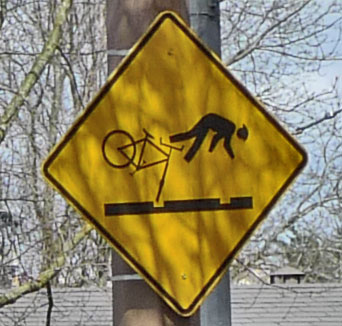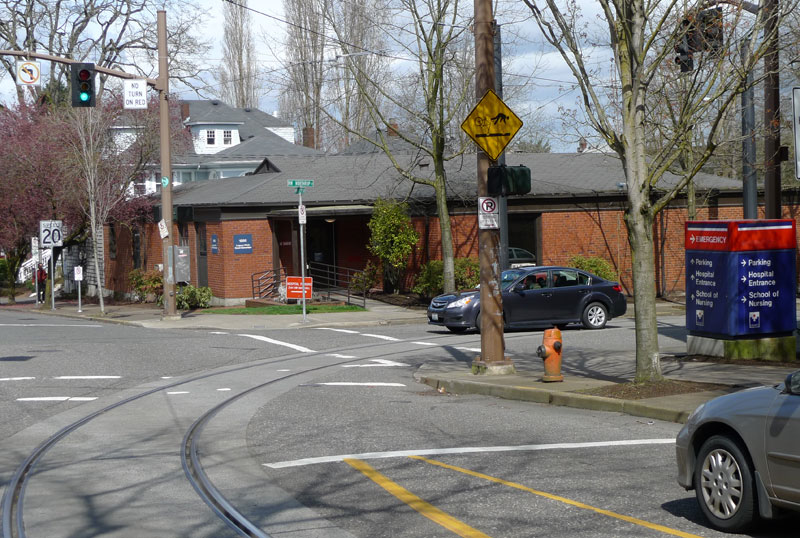The Dangers of Narrow Tires

It is unfortunate that most “road” and even “hybrid” bikes are sold with tires so narrow that you cannot cross streetcar tracks at an oblique angle without risking a fall.
The Seattle Times reported recently about a rail line that crosses a city street not far from my house. “A bicyclist falls there daily,” the article reports. A business owner at the tracks found that “bike wrecks are so constant he keeps a first-aid kit at his front door.”
Over the past decade, there were 66 crashes serious enough to call out the fire department. Then there are the accidents on Seattle’s drawbridges, where cyclists fall into one-inch-wide cracks, sometimes with horrific consequences. There has been much talk about what could be done to make these places safer for cyclists, but gaps and tracks simply are part of the urban landscape in which we cycle.

I know that a skilled rider can bunny-hop across tracks and cracks, no matter at what angle they run. However, the fact is that many people ride bikes who are not that skilled. Nor should they need to be.
With the 42 mm-wide tires of my Urban Bike, I have experimented (at low speed) with the gap next to the rails. Even when crossing the tracks at a very shallow angle, the tires just rolled over the gap.
Since we cannot eliminate tracks and cracks from all roads, why don’t we fit 42 mm tires to the bikes that are sold to most cyclists? Wider tires would make cycling much safer. Besides, the current research indicates that wide tires are at least as fast as narrow tires. In fact, I never felt that I was handicapped during Paris-Brest-Paris last week by the 42 mm tires on my new randonneur bike. Of course, bikes with narrow tires would still be available for enthusiasts who really like the look and feel of narrow tires – but they’d come with warning labels.


